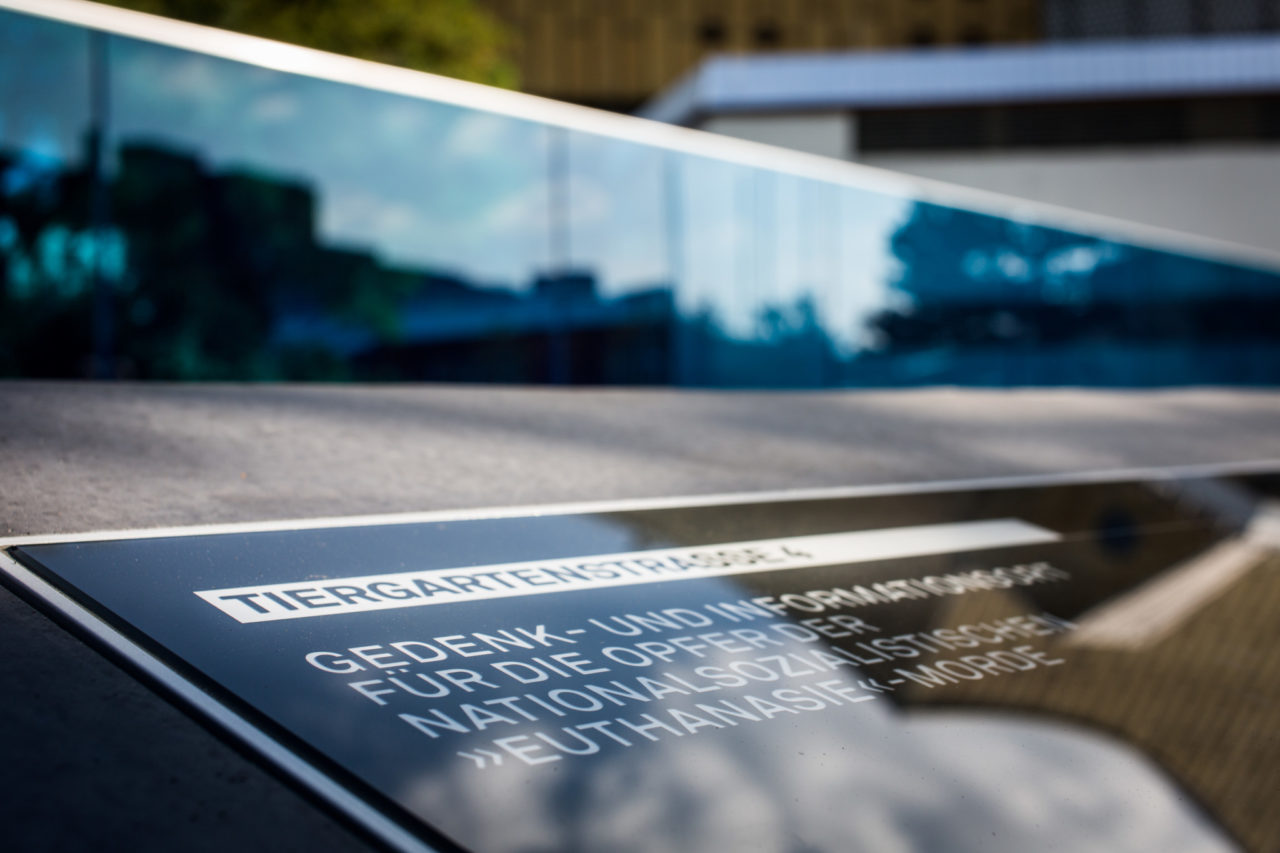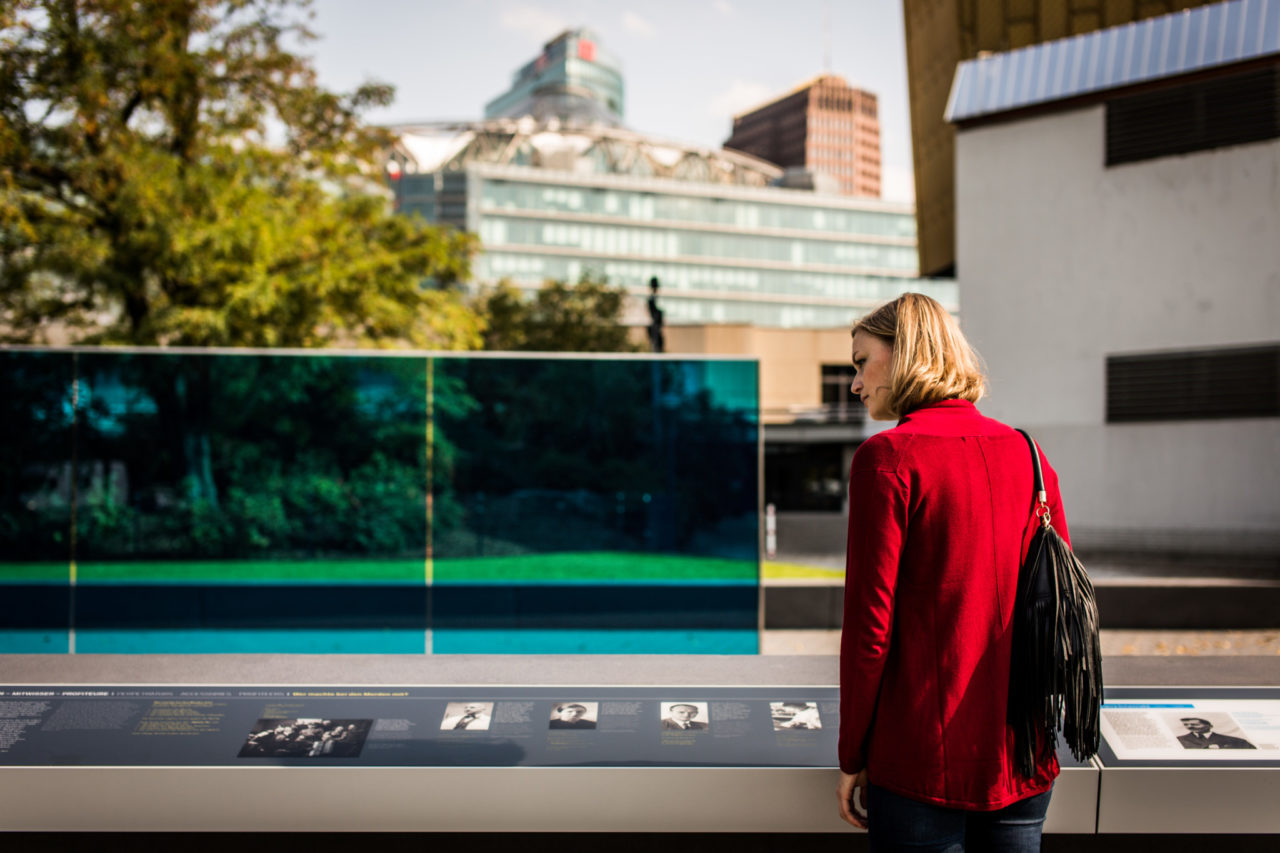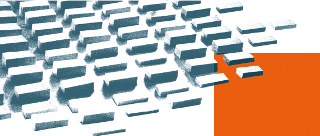The “Memorial to the Victims of the Nazi ‘Euthanasia’ Murders” at the historical site of the planning headquarters, in Berlin’s Tiergartenstrasse 4, commemorates the murder of tens of thousands of patients from sanatoriums and nursing homes as well as “racially” and socially undesirable people.
The winning design by the architect Ursula Wilms as well as the artist Nikolaus Koliusis and the landscape architect Heinz W. Hallmann was ceremoniously handed over to the public on September 2, 2014.
Memorial
barrier-free 24 hours a day
accessible
PLACE
Tiergartenstraße 4
10785 Berlin
CONTACT
+ 49 30 26 39 43 – 0
info@stiftung-denkmal.de
Architects of the memorial site
Based on the decision of the German Bundestag in November 2011, the state of Berlin launched a design competition. The winning design by the architect Ursula Wilms, the artist Nikolaus Koliusis and the landscape architect Heinz W. Hallmann comprises a transparent 24-metre-long blue glass wall, which runs along a dark surface of anthracite-coloured concrete covering slightly inclined towards the centre. An accompanying open-air exhibition provides information on the history of the National Socialist “euthanasia” murders and their effects up to the present day. The concept and contents of the open-air exhibition were developed by the knowledge transfer project “Remembering means commemorating and informing” at the TU Munich, which was supported by the German Research Foundation (DFG).






History of the memorial
The murder of tens of thousands of patients from hospitals, as well as »racially« and socially undesirable people was the first systematic mass crime of the National Socialist regime. It is considered a precursor to the extermination of European Jews.
The “euthanasia” murder program was developed by a department of the “Führer’s Office” with more than 60 employees. From April 1940 his planning and administration centre was located at Tiergartenstraße 4, where under the code name “T 4” – or simply “Aktion” – the mass murder of patients from sanatoriums and nursing homes in the German Reich was initiated, coordinated and carried out.
Doctors and administrative staff organized the recording and selection of patients and their transport in six specially established gas murder institutions in the German Reich. More than 70,000 people fell victim to the mass murder of patients until the action was interrupted on 24 August 1941 due to public unrest. The killing began already with the beginning of the war in September 1939 and continued after the “euthanasia stop” in August 1941 as well as with the attack on the Soviet Union in June 1941 in the whole German Reich and in many occupied territories, especially in the East. By 1945 a further 90,000 patients had died in the German Reich as a result of food deprivation, neglect and medication. “T 4” is only one part of the total crime against prisoners. Research currently estimates a total of 300,000 victims of the so-called “euthanasia” programme in Europe. However, reliable figures are not yet available, particularly for Eastern Europe.
On the grounds of Villa Tiergartenstraße 4 and the neighbouring buildings stands the Philharmonie, inaugurated in 1963 and built by Hans Scharoun (1893-1972).
Few perpetrators and accomplices of Nazi »euthanasia« killings have been held accountable. Many of the doctors involved in the crimes continued to work in their profession after the end of the Second World War. Both German states and Austria refused their recognition. It was only since the 1980s that memorials and memorabilia have been erected in the former killing centres and other crime scenes. A memorial plate has been in place at the planning centre in Tiergartenstraße 4 since 1989. In 2007, a round table was founded »reflections on the transformation of the “T4” memorial place«.
In November 2011, the German Bundestag decided to build a »memorial site for the victims of the Nazi “euthanasia” murders« at the historic site of the planning center. On September 2, 2014, the monument was ceremoniously handed over to the public.
Publications on the memorial
Offers for visitors
Initiatives and partners
- AG Association of “Euthanasia”-Harmed and Forced Sterilized Persons
- www.gedenkort-t4.eu/de
- www.sigrid-falkenstein.de
- Bernburg Memorial
- Brandenburg Memorial
- Grafeneck Memorial
- Hadamar Memorial
- Hartheim Memorial
- Memorial Pirna-Sonnenstein
- Memorial Mark in Berlin-Buch for the Victims of National Socialist Forced Sterilisation and “Euthanasia” Murders
- Monument of the Grey Buses
Accessibility
- There are no in-house parking spaces. The nearest public disabled car spaces are located at the entrance of the Philharmonie, about 50 metres away.
- The nearest bus stop is »Philharmonie«.
- There is no official entrance. The memorial is accessible from all sides.
- The surface of the path is easy to walk on and drive on.
- The path has a minimum width of 310 cm.
- The exhibits and related information are visible and readable while sitting and standing.
- There is no seating.
- The information is provided in writing and can also be retrieved as a film at the touch of a button on screens via DGS.
- There are no induction loops.
- Assistance dogs may be brought.
- The information is conveyed in writing and can be tactilely captured (Braille and prismatic writing).
- The pavement boundary is visually high-contrast and tactile. There are sometimes tactile soil indicators.
- The name and logo of the company are clearly visible from the outside.
- The target is within sight.
- There is a catalogue in Easy Language.
Visitor regulations
We ask all visitors to behave appropriately to the dignity of the place.
The visit of the place of remembrance takes place throughout the year at your own risk.
The use of inline skates, skateboards and bicycles, the contamination and application of graffiti, noise, begging, holding political demonstrations, the application and carrying of political symbols and flags, smoking, grilling and the consumption of alcoholic beverages are not permitted.
Photographs, film and television recordings for commercial purposes require the prior written consent of the Foundation Memorial to the Murdered Jews of Europe.








